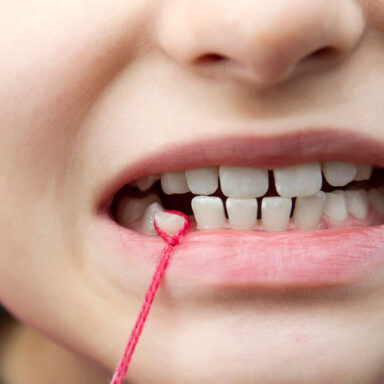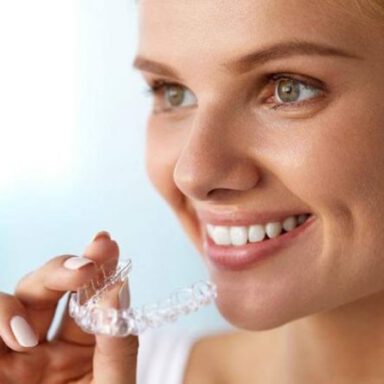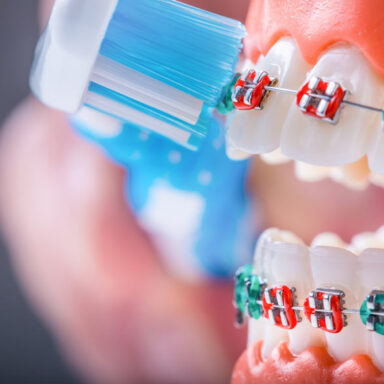Guidebook
Prognathism & progenia: Orthodontics for protruding chins
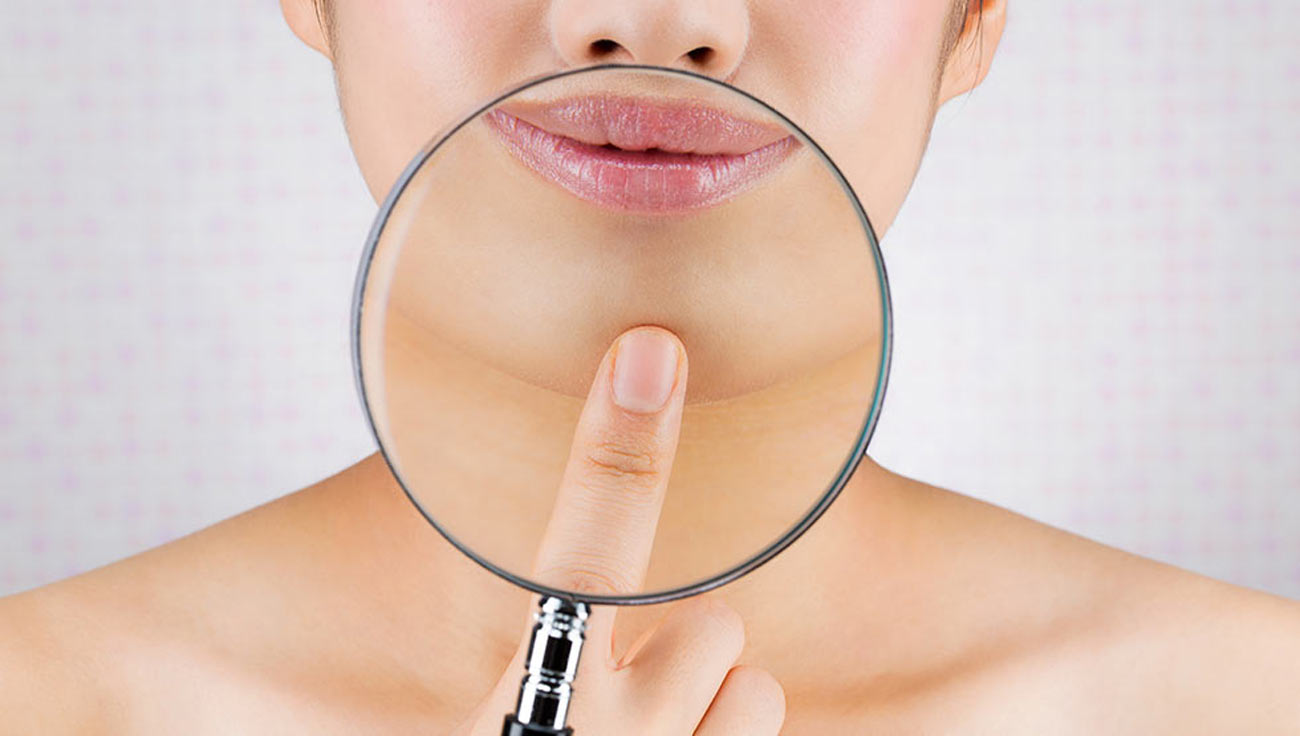
Michael Schumacher has it, many descendants of the Habsburg dynasty had it and many other people have it too. We are talking about a protruding chin or lower jaw. While a dominant lower jaw is a positive, distinctive trademark and personality trait for some, others find the protruding chin to be functionally and/or aesthetically disturbing. In technical terms, the underlying jaw malposition is referred to as progenia or prognathia. In the following article, we will give you an overview of the possibilities of orthodontic treatment for a prominent chin.

Author
Dr. Fabian von Rom
Date
Estimated reading time
approx. 7 min
Prognathie
Contents
Prognathism or progeny – what is it?
Prognathism is a jaw malposition characterized by a protruding chin and a dominant lower jaw. Prominent examples of this are the descendants of the Habsburgs or Michael Schumacher.
Normally, the upper incisors protrude beyond the lower incisors by about 1-2 mm. If it is the other way around, as in the case of prognathism, it is referred to as a reverse overbite or frontal crossbite. In common parlance, prognathism is often referred to as an underbite. In those affected, the lower jaw appears dominant in profile.
The terms prognathism and progeny are often used interchangeably. Strictly speaking, there is a small but subtle difference between the two terms. While prognathism (Latin -gnath = jaw) describes a dominance of the entire lower jaw, progeny (Latin: genio = chin) is strictly speaking a pronounced chin prominence independent of the development of the rest of the lower jaw.
For the sake of simplicity, no distinction is made between prognathism and progeny in the following text. Both terms are used synonymously for a strongly developed lower jaw relative to the upper jaw.
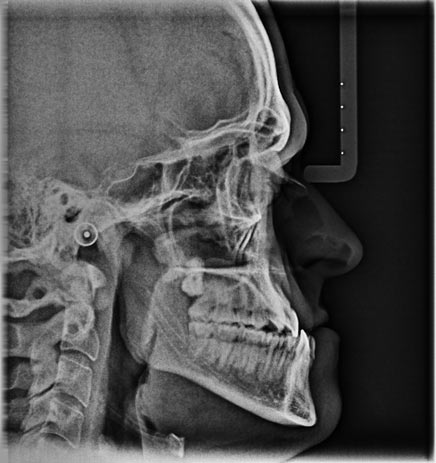
What are the causes of prognathism and reverse overbite?
An inverted overbite can be caused either at the tooth or jaw level.
If there is a problem at tooth level, the axes of the front teeth are not correct. The upper incisors are tilted too far back and the lower incisors are tilted too far forward.
If, on the other hand, the problem exists at jaw level, the entire lower jaw is too far forward. If the incisors are correctly aligned, this also results in a reverse overbite. Prognathism can be caused by insufficient growth of the upper jaw or excessive growth of the lower jaw. A combination of both is also possible.
Genetic factors play an important role in the development of prognathism. Clarifying jaw malocclusions in the parents’ or grandparents’ generation is essential in order to be able to assess the risk of developing progenia in children. If the parents have progenia, the risk of progenia in the children is significantly increased.
What are the consequences of prognathism / progeny?
Prognathism can lead to functional impairments when chewing and speaking, as well as temporomandibular joint disorders (CMD).
Overloading of the temporomandibular joints occurs in particular when conscious or unconscious attempts are made to pull the lower jaw backwards against the skeletal dominance of the lower jaw.
In addition to an inappropriate bite, a reverse overbite also has a psychosocial component. A particularly protruding chin can disrupt the harmony of the facial profile and thus have a negative effect on the patient’s well-being and self-confidence.
How can progeny in children be treated?
If the cause of an inverted overbite is at the level of the teeth, the malocclusion can usually be corrected easily with the help of removable or fixed braces. In some cases, it is also sufficient to eliminate interfering contacts by removing or grinding in affected milk teeth.
If the cause of the progenia is at the jaw level, the correct timing of therapy is crucial for the success of the treatment. In principle, the existing growth potential of the lower jaw cannot be inhibited. Upper jaw growth, on the other hand, can be encouraged at a young age with the help of special braces. This gives children the opportunity to influence the disproportion between the jaws at jaw level. The effectiveness of progeny treatment by developing the upper jaw in children depends heavily on their age. In principle, the earlier the better, as the upper jaw bone grows together with the rest of the facial skull with increasing age. At the same time, it becomes more difficult or even impossible to influence the position of the upper jaw. For this reason, progeny treatment in children is carried out as part of so-called early treatment between the ages of 6 and 9. The aim of the treatment is to harmonize the skeletal conditions at the jaw level. The position of the individual teeth usually plays a subordinate role in such early treatment and is generally only treated at a later stage.
While the growth of the upper jaw is completed at around nine years of age, the lower jaw continues to grow well beyond puberty. This must be taken into account when diagnosing and treating progenia in children. To estimate the expected growth of the lower jaw, it is very important to ask the parents about jaw misalignments in previous generations.

The most effective method for promoting the forward growth of the upper jaw is the combination of special fixed braces (GNE) in combination with a so-called Delaire mask. With the help of rubber bands that are stretched between the Delaire mask and the braces in the mouth, a tensile force is exerted on the upper jaw. As a result, the entire upper jaw is developed forward.
Furthermore, removable braces, so-called functional orthodontic appliances (Fränkel, FR III) can be used, which also promote the forward development of the upper jaw or stabilize an already achieved treatment result.
How does progeny treatment work in adults?
Once growth is complete, a protruding lower jaw can be treated either purely orthodontically or with a combination of orthodontic and maxillofacial surgery.
An inverted overbite caused purely by malocclusion can usually be treated without compromise with braces alone, even in adults.
In the case of mild to moderate prognathism, the malpositioned jaw (dysgnathia) can be compensated for at the tooth level. This is referred to as dental compensation. With the help of braces, all teeth in the upper jaw are moved forwards and those in the lower jaw are moved backwards. Surgical measures are not necessary for dental compensation of prognathism.
If the cause of the prognathism is at the jaw level and dental compensation is not possible due to the extent of the deviation, for example, or is not desired for esthetic reasons, it is also possible to address the problem at the jaw level in adults.
In adults, there is no longer any growth that can be encouraged. Dysgnathia treatment then requires a combination of orthodontic and maxillofacial surgery. After orthodontic pre-treatment to correct the position of the teeth, the jaw misalignment is corrected by a surgeon. During the dysgnathia operation, the upper and lower jaws are moved into the correct position in relation to each other. A distinction is made between a monognathic and a bignathic procedure. Mongnath means that only one jaw is surgically repositioned. In bignathic surgery (bimax surgery), both jaws are surgically repositioned. Whether mono- or bimaxillary surgery is performed depends on the extent of the dysgnathia and the patient’s wishes with regard to the resulting profile change. A combined orthodontic-jaw surgery procedure results in a significantly greater change in the facial profile compared to dental compensation.
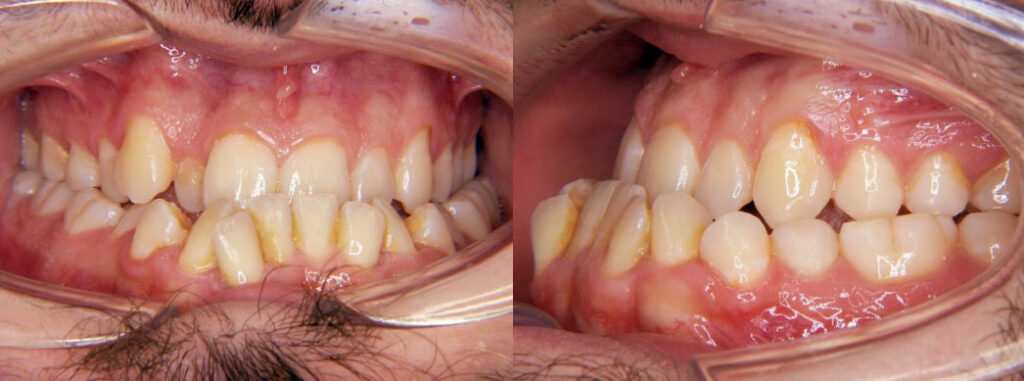
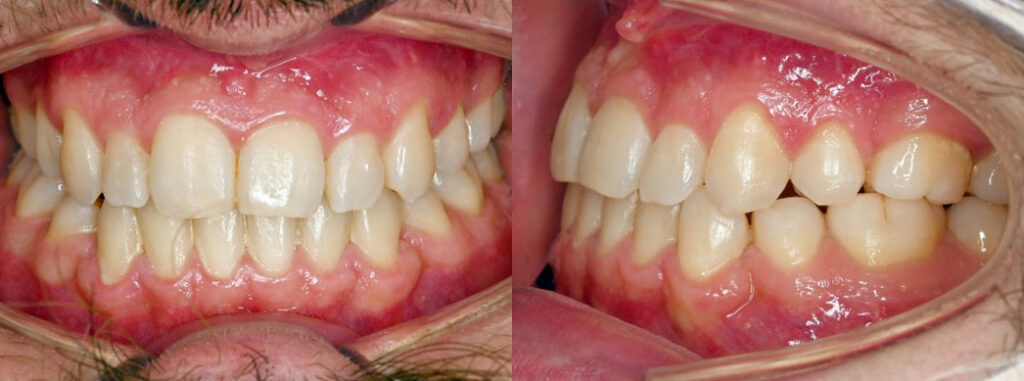
Another difference between combined orthodontic and maxillofacial surgery treatment and purely orthodontic progenic treatment is that health insurance companies often contribute to the costs of orthodontic treatment in these special cases, even for adult patients. In principle, statutory health insurance companies do not cover purely orthodontic treatment without surgery after the age of 18. In the case of private health insurance, the assumption of costs depends on the individual tariff conditions.
You may also be interested in our article on the topic:
KIG – What do the statutory health insurance funds pay?
Your expert for orthodontics
Dr. Fabian von Rom
In the specialist practice for orthodontics, Dr. med, dent. Fabian von Rom uses his extensive expertise and many years of experience to offer patients the best possible care. The practice offers the entire spectrum of modern orthodontics and specializes in innovative and advanced treatment methods. In addition to traditional procedures, the focus is on treatment with invisible braces for teenagers and adults – one of the most modern and discreet solutions in orthodontics. Dr. med. dent. Fabian von Rom attaches great importance to ensuring that medical precision goes hand in hand with a high level of patient satisfaction. By equipping the practice exclusively with individual treatment rooms, individual and professional care at the highest level is guaranteed.

Further topics
In our guide you will find lots more information on current, relevant and interesting topics relating to orthodontics. We hope you enjoy reading it!

